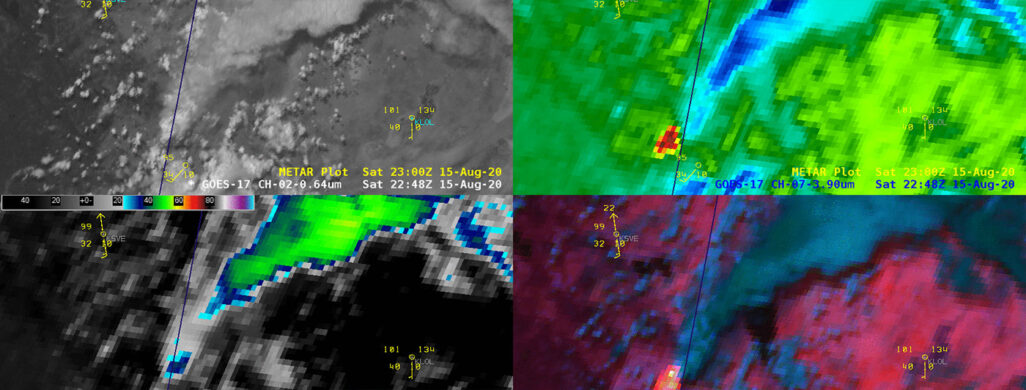Satellite view of fire tornado spawned by pyrocumulonimbus cloud
A pyrocumulonimbus cloud forms when a large thermal source, like a wildfire or volcano, creates conditions suitable for the formation of massive cumulonimbus clouds. Those clouds are capable of producing light rain, heavy winds, lightning and even tornadoes.
On Aug. 15, 2020 the GOES-16 and GOES-17 weather satellites (also known as GOES-East and GOES-West, respectively) captured the formation of a pyrocumulonimbus cloud (or pyroCb for short) over the Loyalton wildfire in eastern California.
Scott Bachmeier is a scientist with the University of Wisconsin–Madison Cooperative Institute for Meteorological Satellite Studies who writes case studies for the CIMSS Satellite Blog. In his latest post, Bachmeier analyzed the pyroCb from available satellite imagery and developed several animations showing the storm’s progression.

Because GOES-16 and -17 include infrared and visible light channels, Bachmeier was able to access close-up, mesoscale images every one minute as the storm developed. He also marked its hotspot. PyroCb clouds can greatly intensify a wildfire through strong and unpredictable winds which can produce deadly fire tornadoes.
The conditions of this storm, and how it developed, prompted the National Weather Service Office at Reno, Nevada to issue a fire tornado warning. The system later produced a fire-tornado.
“The most vigorous pyroCb clouds can extend upward into the lower stratosphere, where the smoke they inject can then be followed for several days as it travels thousands of miles,” says Bachmeier. “The “pyroCb cloud” itself, as seen in satellite imagery, can usually only be followed for a few hours at most, and it tends to dissipate after travelling several hundred miles.”
To learn more about pyroCb clouds and other atmospheric phenomena, visit the CIMSS Satellite Blog.
